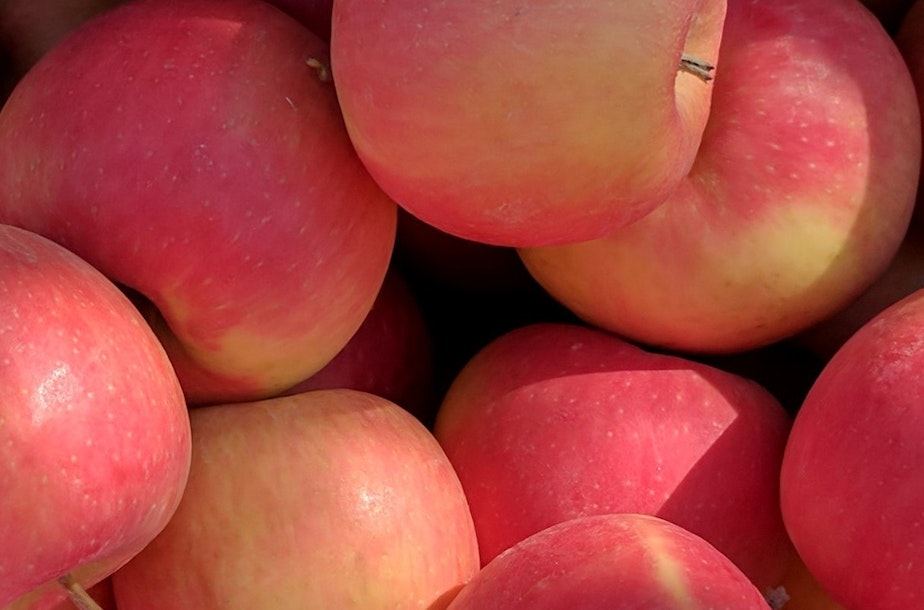What's at the core of new apple creation at Washington State University?

Scientists at Washington State University have been at it again!
They have made a sort of “Frankenstein” by combining two beloved apples into a brand new hybrid. It’s called "WA64," for now. WSU wants to give this new apple a fresh name and is asking the public to help out.

To get to the core of this apple creation, we’re going to peel back some facts with Kate Evans, a horticulturist, fruit breeder, and professor at Washington State University’s Tree Fruit Research and Extension Center in Wenatchee, Washington. She helped develop WSU's latest apple.
"We use exactly the same high tech technology that a bee uses," Evans explained.
Sponsored
While the process is creating a hybrid, the scientists out in Wenatchee aren't splicing any genes.
"We're just transferring pollen from one variety to another variety," Evans said.
In WA64's case, it was pollen from the Cripps Pink apple added to a Honeycrisp apple tree. After those flowers made new apples, in that fruit are lots of seeds, and each one of those seeds is a unique combination of its two parents.
The difference for Evans is that she chooses which two parents she uses in her role as an apple breeder, cultivates the newly created apple, harvests the seeds, then evaluates each individual tree seedling that is grown from those seeds.
"What I'm looking for is the fruit that each one of those produces, because every single tree is unique," Evans said. "In the same way that you and your siblings would be very similar but different. You've got the same two parents, but you know, you've all got your individual quirks, right?"
Sponsored
The process may sound pretty straightforward, but it takes time — six to seven months to cultivate the original apples to harvest the seeds, then six to seven years to grow the new trees.
The first version of WA64 was originally cultivated in 1998. Now, 26 years later, Evans and her team are nearing the finish line. WSU is expecting the WA64 to hit store shelves in 2029, a full 31 years after initial cultivation.
"We're gonna get trees out to growers in 2026, which in itself is is coming up fast," Evans said. "But of course, you have to wait for those trees to grow, the grower needs to be able to grow the tree to produce that woody structure that's then going to produce the apples. So it all takes time."
If you are interested in helping to name WA64, you can head to WSU's contest website. The contest runs through May 5, 2024.
To listen to Soundside's entire conversation with Kate Evans, click the play button above.




